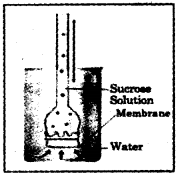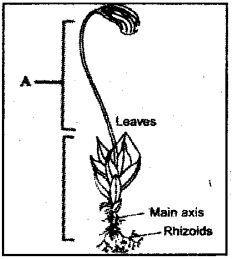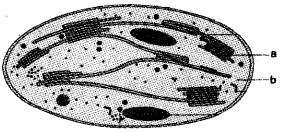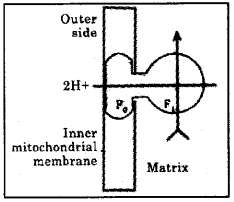Kerala Plus One Botany Previous Year Question Paper March 2019 with Answers
| Board | SCERT |
| Class | Plus One |
| Subject | Botany |
| Category | Plus One Previous Year Question Papers |
Time: 1 Hour
Cool off time: 10 Minutes
Maximum Marks: 30
General Instructions to candidates
- There is a ‘cool off-time’ of 10 minutes each for Botany and Zoology in addition to the writing time of 1 hour each. Further, there is a ‘5 minutes’ ‘preparatory time’ at the end of the Botany Examination and before the commencement of the Zoology Examination.
- Use the ‘cool off time’ to get familiar with the questions and to plan your answers.
- Read the instructions carefully.
- Read questions carefully before you answering.
- Calculations, figures and graphs should be shown in the answer sheet itself.
- Malayalam version of the questions is also provided.
- Give equations wherever necessary.
- Electronic devices except non-programmable calculators are not allowed in the Examination Hall.
Answer all questions from question numbers 1 to 3. Each carry 1 score. (3 × 1 = 3)
Question 1.
Choose the Correct answer.
A structure seen in bacterial cell is
a) Nucleus
b) Lysosome
c) Plastid
d) Mesosome
Answer:
d) Mesosome
Question 2.
Observe the relationship between the first two terms and fill in the blank.
a) Mushroom : Agaricus
b) Bread mould : ………..
Answer:
Rhizopus
Question 3.
Fill in the blank:
Cytokinesis in animal cell takes place by the appearance of a …….. in the plasma membrane.
Answer:
Cleavage furrow
Answer any nine questions from 4 to 14. Each carries two score. (9 × 2 = 18)
Question 4.
Observe the figure given below.

Identify the process demonstrated in the figure. Write the role of membrane in this process.
Answer:
Osmosis,
- Active transport and passive transport occurs
Question 5.
Certain thylakoid pigments are called accessory pigments. Name them, Write their significance.
Answer:
- Chlorophyll b, xanthophylls and carotene
- Protect chlorophyll a molecule from photo-oxidation.
Question 6.
Notice the three simple tissues given below.
a) Sclerenchyma
b) Parenchyma
c) Collenchyma
Identify and write the tissue that consists of cells that are thickened at the corners. Write the function of this tissue.
Answer:
c) Collenchymas
- It provides mechanical support
Question 7.
Write any two differences between aerobic respiration and anaerobic respiration.
Answer:
- Aerobic respiration takes place in cytoplasm and mitochondria with the help of oxygen
- Anaerobic respiration takes place in cytoplasm without the use of oxygen.
Question 8.
Observe the figure given below. It shows two phases in the life cycle of a plant.

Identify the phase marked as A. Write any two peculiarities of this state.
Answer:
A-sporophytic generation
- It is diploid stage, it produces spores
Question 9.
Karyokinesis of mitosis is divided into four stages. Name the second and third stage. Write any two features of second stage.
Answer:
- 2nd metaphase, 3rd anaphase
- Chromosomes are arranged at equator
- Spindle fibres are attached to kinetochore of chromosomes
Question 10.
Observe the figure given below.

Identify the parts a, b. Write their functions.
Answer:
a) Grana
b) Stroma
- In grana light reaction takesplace and energy rich molecules are produced
- In sroma dark reaction takesplace and energy rich molecules are utilized
Question 11.
C4 plants have a special leaf anatomy. Name that antomy. Write three peculiarities of this kind of anatomy.
Answer:
- Kranz anatomy
- Two types of chloroplast present
- Bundle sheath chloroplast is large and agranal
Question 12.
Observe the figure given below.

Name the complex. Write its functions.
Answer:
- ATP synthase complex
- It act as proton channel and oxidative phosphorylation takes place
Question 13.
Observe the elements given below.

Choose microelements from the above.
Answer:
- Copper
- Boron
- Manganese
- Chlorine.
Question 14.
Match the items of column A with B
| A | B |
| a) Reduction | i) Formation of oxygen |
| b) Photolysis | ii) Formation of 3-PGA |
| c) Photorespiration | iii) Formation of PEP |
| d) Carboxylation | iv) Formation of glucose |
| v) Formation of phosphoglycolate |
Answer:
a) Reduction – formation of glucose
b) Photolysis – formation of oxygen
c) Photorespiration – formation of phosphoglycolate
d) Carboxylation – formation of 3PGA
Answer any three questions from 15 to18. Each carries three score. (3 × 3 = 9)
Question 15.
Write the peculiarities of gynoecium seen in Solanaceae and Fabaceae.
Answer:
- Solanaceae – bicarpellary, syncarpous and superior ovary with axile placentation
- Fabaceae – monocarpellary, superior or half inferior ovary with marginal placentation
Question 16.
Plant growth regulators perform various functions in plant body.
a) Name the hormones responsible for apical dominance and bolting. Define the two phenomena.
b) Which plant hormone is referred to as an antagonist to gibberellic acid?
Answer:
- Apical dominance – auxin
Bolting – gibberellins - Apical dominance – Growth of apical bud inhibit the growth of lateral bud
- Bolting – internodal elongation just prior to flowering
Question 17.
Name of three plants are given below.
a) Rhizophora
b) Bougainvillea
c) Pea
Name the modifications seen in these plants. Write their functions.
Answer:
a) Rhizophora – pneumatophore
- It helps in respiration
b) Bougainvillea – thorn
- It acts as defense structure
c) Pea – leaf tendril
- It helps in climbing
Question 18.
Observe the terms given below.
Xylem, Root hairs, Pith, Stomata, Cambium, Bulliform cells
From this, identify and write the structures seen in epidermal tissue system. Write their functions.
(Hint: 3 structures)
Answer:
- Root hair – absorption of water and minerals
- Stomata – helps in gaseous exchange
Bulliform cells – it helps in rolling and unrolling of lamina. This help to reduce transpiration rate.
